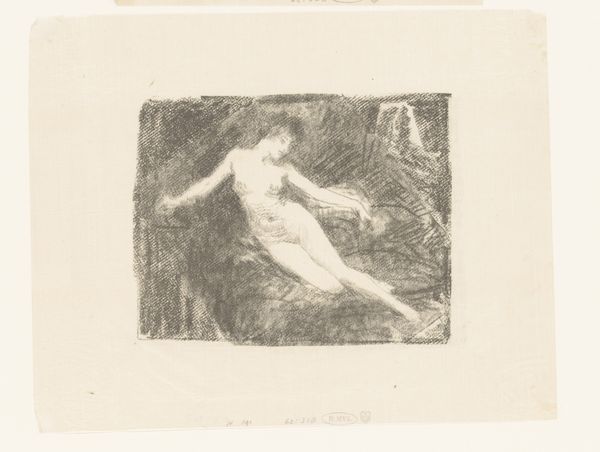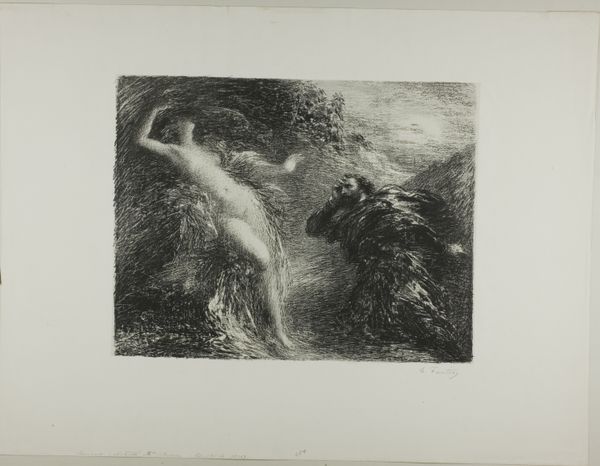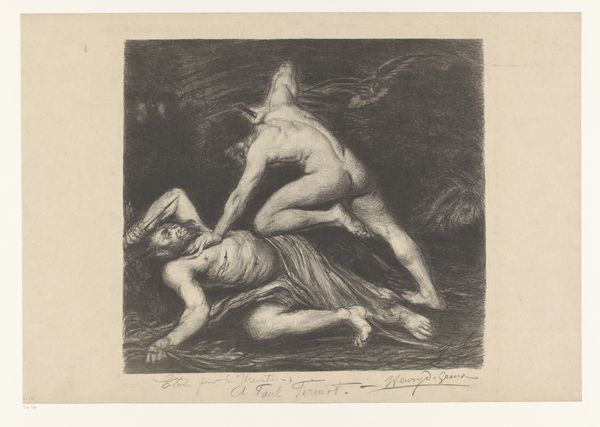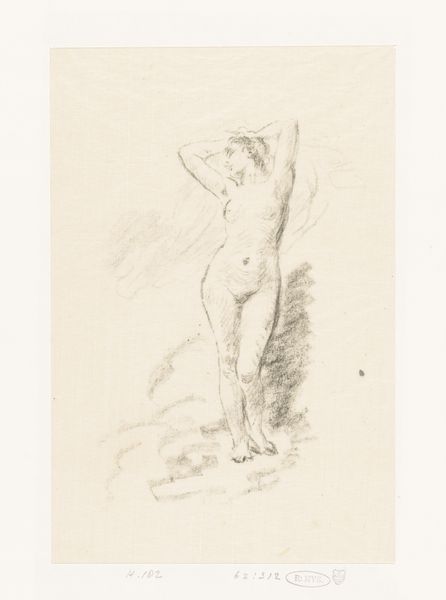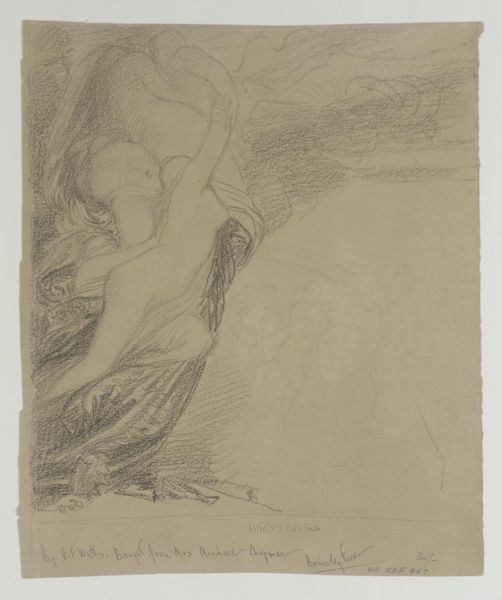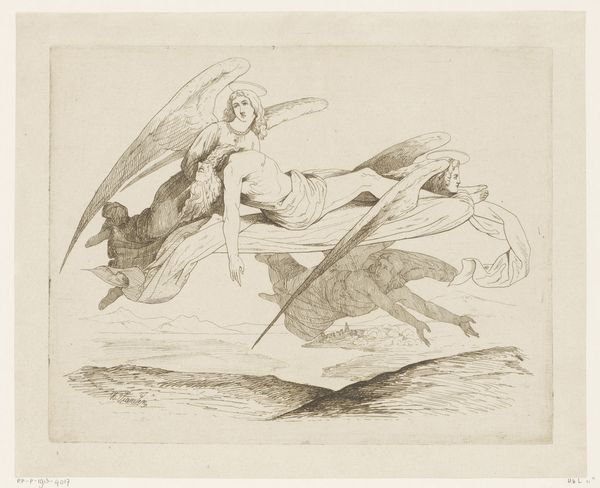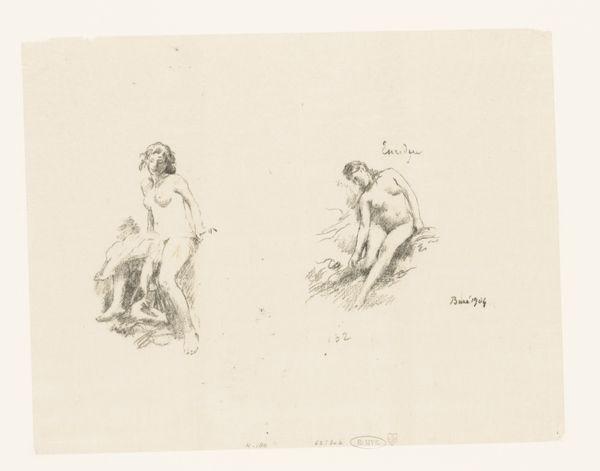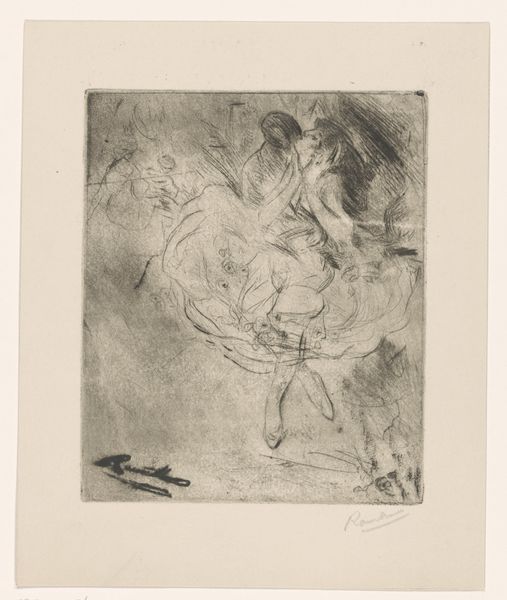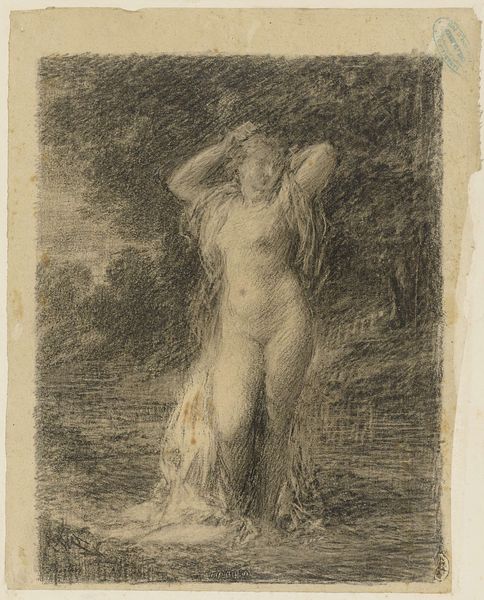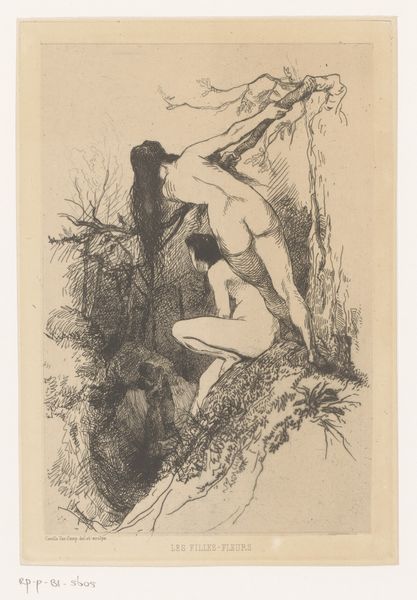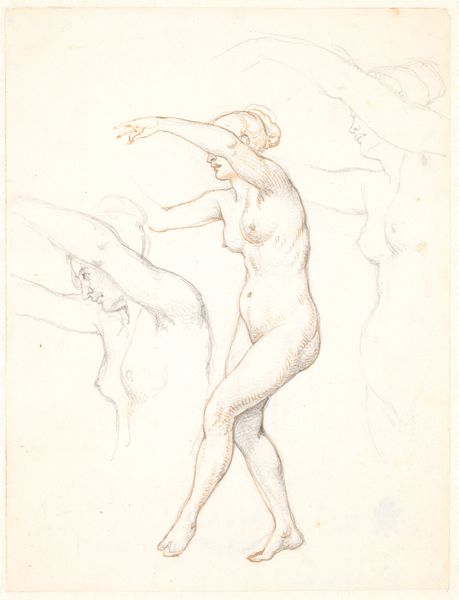
drawing, pencil
#
pencil drawn
#
drawing
#
pencil sketch
#
figuration
#
pencil drawing
#
pencil
#
symbolism
#
pencil work
#
watercolour illustration
#
nude
Dimensions: height 258 mm, width 311 mm
Copyright: Rijks Museum: Open Domain
Curator: Henri Fantin-Latour's "Naakte vrouw ontwaakt," or "Naked Woman Awakening," a pencil drawing created in 1906, here at the Rijksmuseum, presents an intimate study of a reclining nude figure. What strikes you first about this piece? Editor: Immediately, I sense a dreamlike quality. The loose pencil strokes create a hazy atmosphere, and the figure herself seems suspended between sleep and wakefulness. There's an ambiguity that's quite compelling. Curator: Yes, Fantin-Latour often explored these liminal states, drawing heavily on Symbolist ideas about inner experience. The woman's pose, with her arm reaching upward, might symbolize aspiration, or even a yearning for something beyond the physical realm. Consider, too, the loaded history of the "awakening" figure, how it’s often equated to spiritual and/or intellectual fulfillment. Editor: Absolutely, and given the era, early 20th century, the act of awakening can also be interpreted as a broader social commentary. Are we witnessing a challenge to traditional representations of women? The nude figure, historically rendered as passive and objectified, seems here to be stirring, taking agency. Or at least seeming to. There's an unease to it also, in the contrast of the free flowing brushstrokes in the upper background and more restrained pencilstrokes used for the figure. Curator: I find it interesting how Fantin-Latour avoids idealized beauty. He captures the woman's vulnerability, but there's also a strength in her posture, in that extended arm. The symbol of an extended arm carries such power. He imbues her with a sense of presence and determination, but the way in which that contrasts to the ethereal brushstrokes around her makes you wonder how strong she actually is. Editor: Yes, she's neither fully objectified nor fully liberated. The tension is what makes the drawing so compelling, refusing easy categorisation of its subject. Fantin-Latour perhaps is hinting at the complexity of female identity and the changing social landscape of the time, without presenting concrete solutions or a clear ideal. Curator: Looking at it from an iconographic perspective, I think of mythological figures, like Psyche, awakening to enlightenment. The female figure is not merely physical, but represents potential, transformation and growth. Editor: Indeed, and viewing it now, I realize that its value resides not only in Fantin-Latour's skill, but in its invitation to us as viewers, daring us to question and engage with the art historical and contemporary implications. Curator: It truly showcases the power of Symbolism to capture not just what is seen, but what could be. Editor: Precisely, a subtle but persistent disruption.
Comments
No comments
Be the first to comment and join the conversation on the ultimate creative platform.
